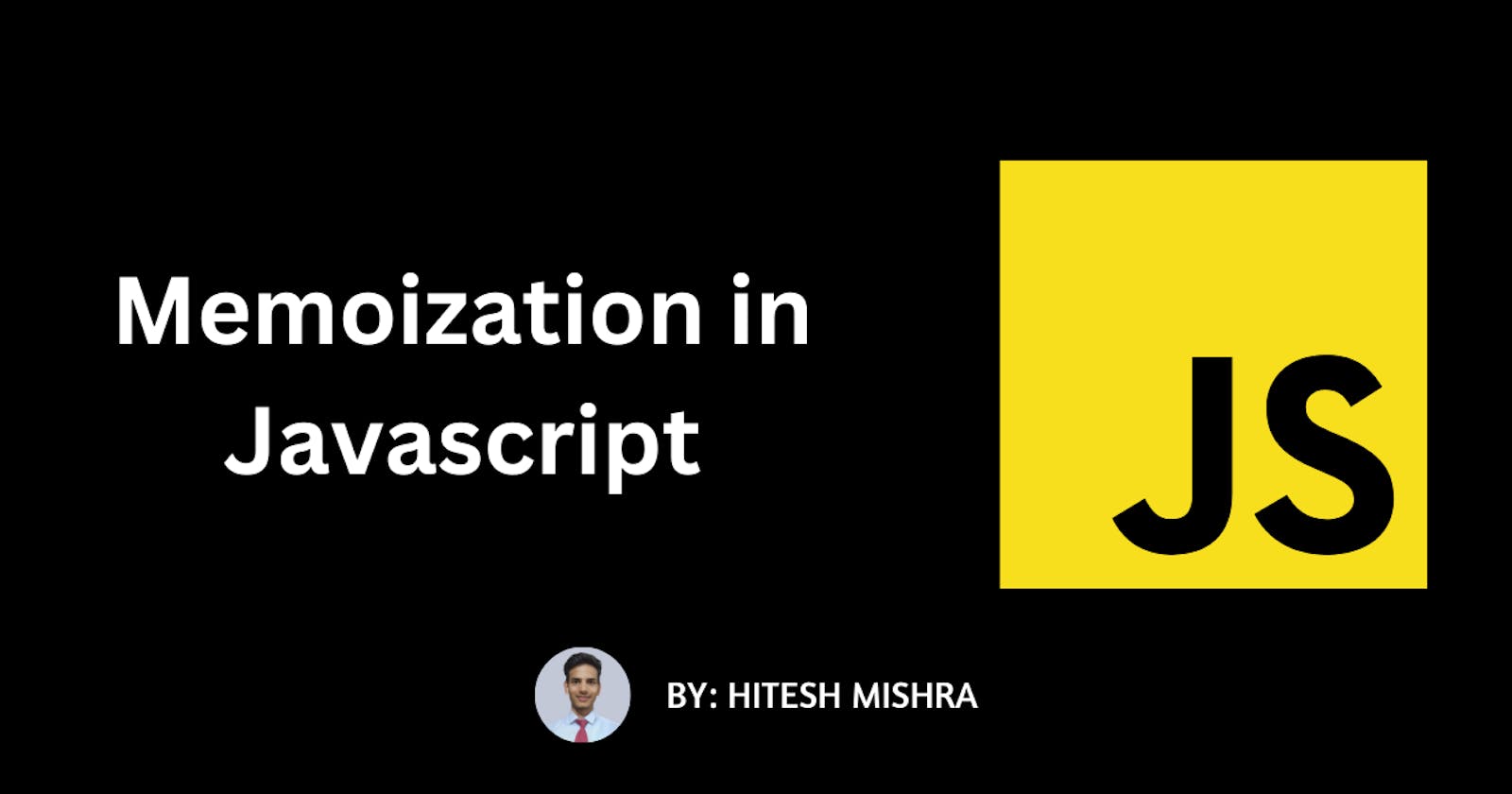Memoization is a powerful technique used in computer science to improve the performance of applications. It involves caching the results of expensive function calls and returning the cached result when the same inputs occur again. This technique can help reduce the overall execution time of an application by avoiding the repeated computation of the same result.
In this article, we'll explore memoization in JavaScript in detail, including its benefits, how it works, and some examples of how to implement it.
Benefits of Memoization
Memoization can provide several benefits to applications, including:
Improved performance: Memoization can reduce the overall execution time of an application by caching the results of expensive function calls and returning the cached result when the same inputs occur again.
Reduced computational load: By caching function results, memoization can help reduce the computational load on an application, which can improve scalability and reduce resource usage.
Simplified code: Memoization can simplify complex algorithms by caching intermediate results, which can make code easier to read and maintain.
How Memoization Works
Memoization works by caching the results of function calls based on the inputs to the function. When a function is called, the input parameters are used as a key to look up the cached result. If the result is found in the cache, it is returned immediately without executing the function. If the result is not found in the cache, the function is executed, and the result is stored in the cache for future use.
The caching mechanism can be implemented in various ways, including using objects, arrays, or maps. In JavaScript, objects are commonly used to implement memoization.
Memoization Examples in JavaScript
Basic Memoization
Let's start with a simple example of memoization in JavaScript. Suppose we have a function that computes the Fibonacci sequence for a given number. The Fibonacci sequence is a series of numbers in which each number is the sum of the two preceding numbers. For example, the sequence starts with 0, 1, 1, 2, 3, 5, 8, 13, 21, 34, 55, and so on.
Here's a basic implementation of the Fibonacci sequence function:
function fibonacci(n) {
if (n <= 1) {
return n;
}
return fibonacci(n - 1) + fibonacci(n - 2);
}
This implementation is recursive and computes the Fibonacci sequence by calling itself with smaller input values. However, this implementation is not very efficient because it repeats many of the same calculations for each recursive call.
To improve the performance of this function, we can use memoization to cache the results of previous calls. Here's an example of how we can modify the function to use memoization:
function fibonacci(n, memo = {}) {
if (n in memo) {
return memo[n];
}
if (n <= 1) {
return n;
}
const result = fibonacci(n - 1, memo) + fibonacci(n - 2, memo);
memo[n] = result;
return result;
}
In this implementation, we've added a second argument to the function called memo, which is an object that we'll use to cache the results of previous calls. The if (n in memo) check determines whether we've already computed the result for the current input value and if so, returns the cached result immediately. Otherwise, we compute the result recursively, cache it in the memo object, and return it.
Let's test the performance of the memoized function compared to the original implementation:
console.time('fibonacci');
console.log(fibonacci(40)); // 102334155
console.timeEnd('fibonacci');
``
If we run the above code, we should see that the fibonacci function with memoization is significantly faster than the original implementation. The reason for this is that the memoized version caches intermediate results, which avoids redundant computation.
Memoization with Higher-Order Functions
Another useful pattern for memoization in JavaScript involves using higher-order functions. A higher-order function is a function that takes one or more functions as arguments and/or returns a function as its result.
Let's consider an example of a higher-order function that takes a function as an argument and returns a memoized version of that function. Here's an example implementation:
function memoize(fn) {
const cache = {};
return function(...args) {
const key = JSON.stringify(args);
if (key in cache) {
return cache[key];
}
const result = fn.apply(this, args);
cache[key] = result;
return result;
};
}
In this implementation, the memoize function takes a single argument, which is the function to be memoized. It returns a new function that wraps the original function and provides memoization.
The cache object is used to store the results of previous function calls. The wrapped function takes an arbitrary number of arguments using the rest parameter syntax (...args). These arguments are used to generate a unique cache key using JSON.stringify.
If the cache key already exists in the cache object, the cached result is returned immediately. Otherwise, the wrapped function is called with the input arguments, and the result is stored in the cache object before being returned.
Let's see how we can use this memoize function with our previous fibonacci example:
const memoizedFibonacci = memoize(fibonacci);
console.time('memoizedFibonacci');
console.log(memoizedFibonacci(40)); // 102334155
console.timeEnd('memoizedFibonacci');
Here, we're creating a new memoized version of the fibonacci function using the memoize higher-order function. We then call the memoized function with an input value of 40 and time its execution using console.time and console.timeEnd.
We should see that the memoized version of the function is even faster than the previous memoized version, as the memoization is now handled by the higher-order function, which can cache the results of any function passed to it.
Conclusion
Memoization is a powerful technique that can improve the performance and efficiency of JavaScript applications. By caching the results of expensive function calls, memoization can reduce the overall computational load of an application and simplify complex algorithms. We've explored two examples of memoization in JavaScript, one using a simple caching object and the other using a higher-order function, and seen how they can significantly improve the performance of a function.
